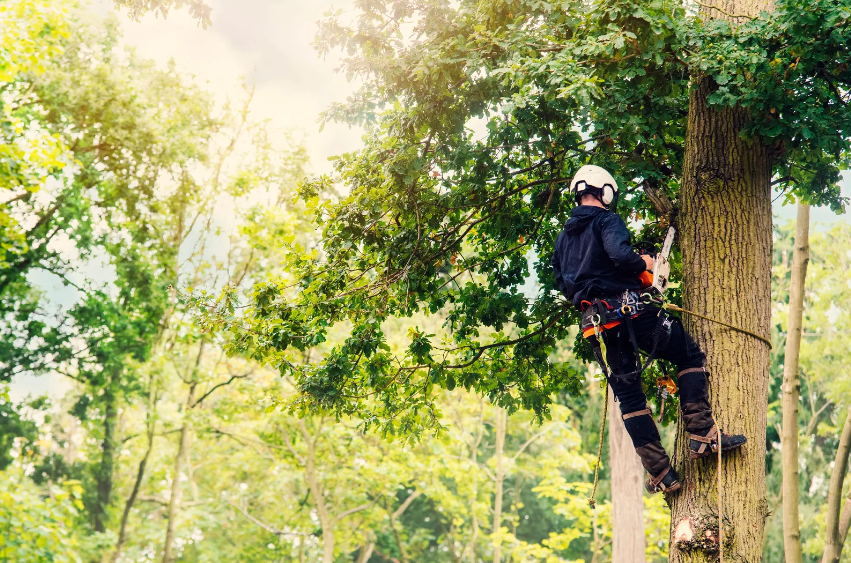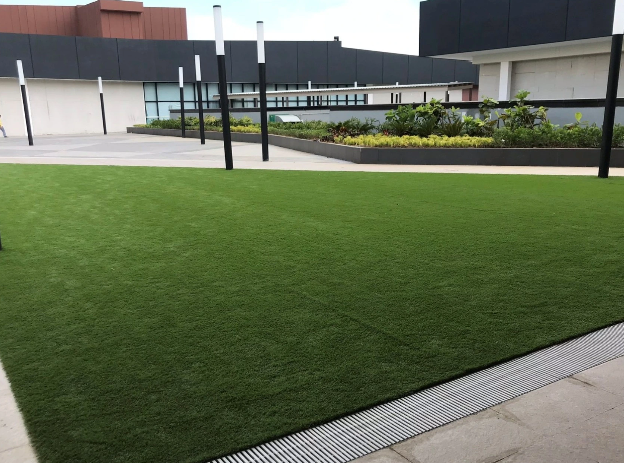Maintaining and increasing property value is a top priority for homeowners, real estate investors, and property managers alike. Among the many factors that contribute to a property’s worth, landscaping—particularly tree cutting—plays a significant role. By strategically cutting trees, property owners can enhance curb appeal, improve safety, and maximize the functional space available on their land. This blog explores how tree cutting, when done thoughtfully, can lead to a substantial boost in property value.
Understanding Strategic Tree Cutting
Tree cutting isn’t just about removing trees; it’s a carefully planned process that considers the long-term impact on your property. Strategic tree cutting involves assessing which trees contribute positively to the landscape and which ones detract from it. This approach ensures that only those trees that pose a risk or hinder the aesthetic and functional aspects of the property are removed. Strategic tree cutting, therefore, is a critical component of maintaining a property that is both beautiful and safe.
The Relationship Between Landscaping and Property Value
The first impression a property makes on potential buyers or visitors is often tied to its landscaping. Trees are a central element in most landscapes, offering shade, privacy, and beauty. However, when trees are overgrown, diseased, or poorly placed, they can detract from the property’s overall appeal. Strategic tree cutting allows property owners to balance the benefits of trees with the need for a clean, attractive landscape that enhances property value. By managing tree growth and placement through strategic tree cutting, homeowners can ensure that their property remains visually appealing and market-ready.
Key Benefits of Strategic Tree Cutting
Enhancing Safety
One of the primary benefits of strategic tree cutting is the enhancement of safety. Trees that are too close to the house, power lines, or other structures can pose a significant hazard, especially during storms. Tree cutting reduces the risk of falling branches or uprooted trees causing damage to the property. Furthermore, clearing overgrown areas through tree cutting can improve visibility around the home, deterring potential security threats.
Increasing Usable Space
Strategic tree cutting can also increase the usable space on a property. By removing trees that crowd the yard or block sunlight, homeowners can create more open and functional outdoor areas. Tree cutting can make space for gardens, patios, or play areas, all of which can add value to the property. Additionally, by allowing more natural light to reach the home’s interior, tree cutting can enhance the living environment, making rooms feel brighter and more inviting.
Boosting Property Aesthetics
A well-executed tree cutting plan can significantly boost a property’s aesthetics. Trees that obscure the architecture of the home or create a cluttered appearance can be trimmed or removed to highlight the property’s best features. Tree cutting can also help in creating a more balanced and harmonious landscape, where each element complements the others. This attention to detail can make a property more attractive to potential buyers, thereby increasing its market value.
Promoting Healthy Tree Growth
Strategic tree cutting isn’t just about removal; it’s also about promoting the health of the trees that remain. By selectively pruning or cutting certain trees, property owners can encourage healthier growth and prevent the spread of disease. Tree cutting can also help in maintaining the overall balance of the landscape, ensuring that no single tree dominates or detracts from the beauty of the yard. Healthy, well-maintained trees contribute positively to property value, making tree cutting a vital part of landscape management.
Strategic Tree Cutting Techniques
Selecting the Right Trees for Removal
Not all trees are created equal when it comes to enhancing property value. Strategic tree cutting involves identifying which trees are beneficial to the landscape and which are liabilities. Dead, diseased, or overcrowded trees should be prime candidates for removal. By focusing on the trees that detract from the property’s appearance or safety, strategic tree cutting can make a significant difference in both the look and value of the property.
Timing Matters
When it comes to tree cutting, timing is crucial. Certain times of the year are better for tree cutting due to factors like tree health, weather conditions, and local wildlife activity. For instance, tree cutting during late winter or early spring is often ideal, as it minimizes the impact on the tree and the surrounding ecosystem. By carefully planning the timing of tree cutting, property owners can ensure that the process is both effective and environmentally responsible.
Hiring Professionals
While some tree cutting tasks might seem manageable, hiring professionals is often the best approach, especially for larger or more complex jobs. Certified arborists have the expertise to assess which trees should be cut and how to do it safely. Professional tree cutting services also come with the right equipment and knowledge to handle difficult situations, such as trees near power lines or homes. Investing in professional tree cutting ensures that the job is done correctly, protecting both the property and its value.
Potential Risks of Improper Tree Cutting
Decreasing Property Value
Improper tree cutting can have the opposite effect of what’s intended, actually decreasing property value. Over-cutting or removing too many trees can leave the landscape looking barren and uninviting. Additionally, unprofessional tree cutting can result in damage to the property, such as unsightly stumps or damage to surrounding plants. It’s essential to approach tree cutting with a strategic plan to avoid these pitfalls and ensure that the process enhances, rather than detracts from, the property’s value.
Environmental Concerns
Tree cutting, if not done carefully, can lead to environmental issues. Removing too many trees at once can disrupt local ecosystems, leading to problems like soil erosion, loss of wildlife habitat, and drainage issues. Strategic tree cutting should always consider the environmental impact, ensuring that the property remains sustainable and in harmony with its natural surroundings. By balancing tree cutting with environmental preservation, property owners can protect both their investment and the local ecosystem.
Tips for Homeowners
Regular Tree Inspections
To maintain property value, regular tree inspections are essential. Early detection of issues such as disease, overgrowth, or dead trees can prevent more significant problems down the line. By scheduling regular tree inspections and addressing any issues through strategic tree cutting, homeowners can keep their property in top condition. Whether handled personally or through professional services, tree cutting should be a part of every homeowner’s maintenance routine.
Maintaining Balance
When it comes to tree cutting, balance is key. While it’s important to remove trees that pose risks or detract from the property, it’s equally crucial to retain the natural beauty that trees provide. Strategic tree cutting allows homeowners to maintain a landscape that is both functional and aesthetically pleasing. By considering the long-term impact of tree cutting, property owners can ensure that their yard remains a valuable asset.
Future Planning
Finally, homeowners should think ahead when it comes to tree cutting. Trees grow over time, and what is a manageable situation now could become a problem in the future. Strategic tree cutting should include a plan for how the landscape will evolve, ensuring that the property continues to benefit from well-placed and healthy trees. By planning for the future, homeowners can protect their investment and continue to enjoy the benefits of a beautiful, tree-filled landscape.
Takeaway
Strategic tree cutting is a powerful tool for enhancing property value. By carefully selecting which trees to remove and when to do it, homeowners can improve safety, increase usable space, boost aesthetics, and promote healthy tree growth. It’s essential to approach tree cutting with a plan and to consider the long-term impact on both the property and the environment. With the right strategy, tree cutting can transform a property, making it more attractive to buyers and more enjoyable for those who live there.











